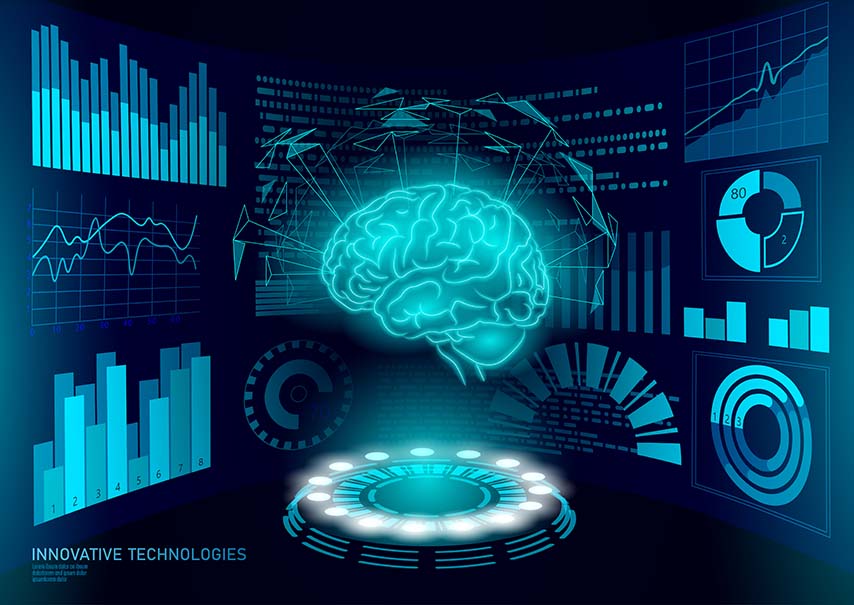DBS Surgery in Sugar Land
Deep brain stimulation (DBS) surgery is a well-established neurosurgical therapy for the control of movement issues associated with Parkinson’s disease and essential tremors. After the successful placement of the DBS device by your neurosurgeon, Dr. Hashwani will start the intensive and sensitive task of DBS programming so that your neurostimulator can deliver the proper signals. This task may take more than one visit over the course of several weeks but is needed to determine the optimal balance between alleviating symptoms and limiting side effects.

What is deep brain stimulation?
Deep brain stimulation is an advanced surgical procedure that involves implanting electrodes into specific regions of the brain. These electrodes produce electrical impulses that regulate abnormal brain signals, allowing for improved function and reduced symptoms in various neurological conditions. Think of it as a pacemaker for the brain, modulating electrical activity to produce therapeutic effects.
How does deep brain stimulation work?
The DBS system consists of three main components: the electrode, the extension, and the neurostimulator (or battery pack). Once implanted, the electrode sends electrical impulses through the extension to the neurostimulator, which then regulates the amount and frequency of the impulses. This modulated electrical activity targets specific areas in the brain responsible for movement and other functions, thereby correcting the misfiring neurons and alleviating symptoms.

Benefits of DBS Surgery
The main advantage of DBS is its ability to offer significant symptom relief without the need for daily medication. Patients often report better movement control, reduced tremors, and an overall improvement in their quality of life. Furthermore, the procedure’s non-destructive nature means it can be reversed or adjusted as needed.
Risks of DBS Surgery
Like any surgical procedure, DBS carries some risks, including infection, bleeding, and possible reactions to the anesthesia. Additionally, there’s a chance the device might malfunction or the electrodes could shift from their optimal position.
Side Effects of DBS Surgery
Post-surgery, some patients might experience temporary side effects such as tingling sensations, speech and vision problems, and balance issues. These usually resolve as the brain adapts and the device settings are fine-tuned.
How the Procedure Works
Under anesthesia, electrodes are implanted into the brain. These are then connected to a neurostimulator placed beneath the skin, usually in the chest.
During the Procedure
Patients are typically awake during the procedure to provide feedback, ensuring the electrodes’ optimal placement. Throughout, the surgical team monitors brain activity and communicates with the patient to ensure minimal discomfort and maximal precision.
After the Procedure
Post-surgery, there will be a recovery period where patients are monitored closely. Over subsequent weeks, device settings are adjusted for optimal symptom relief, and patients receive guidance on managing any side effects.
Proudly Providing Effective DBS Surgery in Sugar Land
In Sugar Land, our state-of-the-art DBS clinic stands as a testament to our commitment to excellence in neurosurgery. Our patients from Sugar Land and beyond receive unparalleled care, underpinned by Dr. Hashwani’s vast experience and expertise as a leading DBS surgeon in Sugar Land.
Contact Our Clinic Today to Schedule an Appointment
Your journey to a better quality of life begins here. If you or a loved one are considering deep brain simulation surgery in Sugar Land, we’re here to guide and support you. Reach out to our clinic today, and take the first step towards the transformative benefits of DBS.
Schedule an Appointment/Evaluation
You can contact Dr. Hashwani for an evaluation by calling 281-313-0337 or by filling out the contact form below:
1. What conditions can DBS Surgery treat?
Deep brain stimulation is primarily used to treat movement disorders such as Parkinson’s disease and essential tremors. However, it’s also being researched for potential applications in other conditions like epilepsy, obsessive-compulsive disorder, and depression.
2. Is DBS Surgery a cure for Parkinson's disease or essential tremors?
While DBS surgery offers significant symptom relief, it’s not a cure. The procedure aims to manage and control symptoms, making them less severe and improving the quality of life for patients. Regular follow-ups and potential adjustments to the device settings are often required.
3. How long does the neurostimulator battery last?
The lifespan of the neurostimulator’s battery can vary based on the settings used. On average, it can last 3 to 5 years. When the battery depletes, a replacement surgery will be required. Some neurostimulators are rechargeable, extending their lifespan.
4. Will I be able to feel the DBS device inside my body?
While you might be aware of the neurostimulator’s presence initially, most patients get used to it over time. The device is typically placed beneath the skin in the chest, similar to a pacemaker.
5. Are there any restrictions or lifestyle changes after having DBS Surgery?
Post-surgery, patients are advised to avoid activities that can strain the surgical area for a few weeks. Additionally, devices that generate strong electromagnetic fields, like MRI machines, might interfere with the DBS device. Always inform medical professionals about your DBS system before undergoing any procedure. Regular follow-ups with the DBS clinic will help ensure the device’s optimal functioning and address any concerns.
- Monday8:30 AM — 4:30 PM
- Tuesday8:30 AM — 4:30 PM
- Wednesday8:30 AM — 4:30 PM
- Thursday8:30 AM — 4:30 PM
- Friday8:30 AM — 1:00 PM
- SaturdayClosed
- SundayClosed
